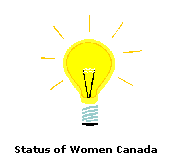 Harriet Brooks, born 1876 in Ontario, Canada’s first woman nuclear physicist, made a number of discoveries about radiation and for a short time conducted research in Paris for Dr. Marie Curie;
Harriet Brooks, born 1876 in Ontario, Canada’s first woman nuclear physicist, made a number of discoveries about radiation and for a short time conducted research in Paris for Dr. Marie Curie;
 Maude Abbott, physician and scientist, born 1869 in Quebec, became a world authority on congenital heart ailments;
Maude Abbott, physician and scientist, born 1869 in Quebec, became a world authority on congenital heart ailments;
 Irma LeVasseur, in 1903 won authorization to be admitted to the Quebec College of Physicians and Surgeons through a private member’s bill in the legislature making her the first French-Canadian woman licensed to practice medicine in Quebec;
Irma LeVasseur, in 1903 won authorization to be admitted to the Quebec College of Physicians and Surgeons through a private member’s bill in the legislature making her the first French-Canadian woman licensed to practice medicine in Quebec;
 Elsie Gregory MacGill of B.C. in 1927 became the first woman to graduate with a Bachelor of Science degree specializing in electrical engineering. During World War II she oversaw Canadian production of the Hawker Hurricane, the plane made famous in the Battle of Britain;
Elsie Gregory MacGill of B.C. in 1927 became the first woman to graduate with a Bachelor of Science degree specializing in electrical engineering. During World War II she oversaw Canadian production of the Hawker Hurricane, the plane made famous in the Battle of Britain;
 Ursula Franklin, scientist and peace advocate, pioneered the development of archaeometry, which applies the modern technique of materials analysis to archaeology. She is the recipient of many awards including the Governor General’s Award in Commemoration of the Person’s Case in 1991;
Ursula Franklin, scientist and peace advocate, pioneered the development of archaeometry, which applies the modern technique of materials analysis to archaeology. She is the recipient of many awards including the Governor General’s Award in Commemoration of the Person’s Case in 1991;
 Rachel Zimmerman of London, Ontario in 1990 at age 13, developed a printer for Blissymbolics, an international pictograph language which permits persons who are deaf, persons with cerebral palsy, stroke survivors and others to communicate by computer;
Rachel Zimmerman of London, Ontario in 1990 at age 13, developed a printer for Blissymbolics, an international pictograph language which permits persons who are deaf, persons with cerebral palsy, stroke survivors and others to communicate by computer;
 Dorothy Jones, from Calgary, in 1994-95 became the first Black woman to be National president for the Canadian Operational Research Society. Operational Research is a management system which applies scientific methods to problem solving and decision making;
Dorothy Jones, from Calgary, in 1994-95 became the first Black woman to be National president for the Canadian Operational Research Society. Operational Research is a management system which applies scientific methods to problem solving and decision making;
 In 1997, Nadine Caron became the first aboriginal woman to graduate from medical school at the University of British Columbia, and the top student in her graduating class.
In 1997, Nadine Caron became the first aboriginal woman to graduate from medical school at the University of British Columbia, and the top student in her graduating class.
 In 1997, Julie Payette from Quebec, the only female astronaut on the Canadian Team, continues to research human-computer interfaces, natural language processing and automatic speech recognition (studying how computers can understand voice commands).
In 1997, Julie Payette from Quebec, the only female astronaut on the Canadian Team, continues to research human-computer interfaces, natural language processing and automatic speech recognition (studying how computers can understand voice commands).


 OCTOBER 1997
OCTOBER 1997 


